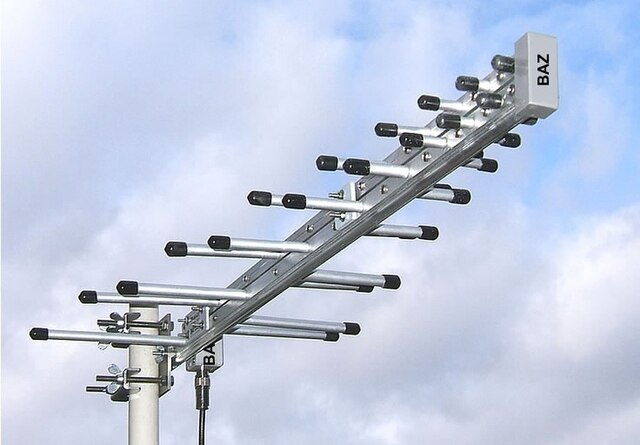Introduction to LPDA Antenna
An LPDA antenna, or log periodic antenna, is a specialized directional antenna designed to operate across a broad frequency range. Unlike narrowband antennas that function within limited frequencies, an LPDA antenna ensures stable performance over multiple bands. Its unique structure, consisting of a series of dipole elements arranged in a logarithmic pattern, enables high gain and consistent impedance characteristics.
The versatility of an LPDA antenna makes it widely applicable in telecommunications, broadcasting, and military operations. Its ability to cover multiple frequency bands with a single antenna reduces the need for multiple antennas in complex communication systems. Understanding how it works, where it is used, its advantages, and its pricing helps in selecting the right LPDA antenna for specific applications.
Working Principle of Log Periodic Antenna
A log periodic antenna functions by utilizing a series of elements arranged in a decreasing order of length from the back to the front. This arrangement allows for efficient impedance matching and consistent radiation properties across a wide frequency spectrum.
Key components of an LPDA antenna include:
- Dipole Elements: Arranged in a tapered structure to accommodate different frequencies.
- Boom Structure: Provides support to the elements and ensures mechanical stability.
- Feedline System: Distributes the signal effectively across the elements.
When a signal is transmitted or received, the elements resonate at different frequencies depending on their length. This feature allows the log periodic antenna to function efficiently without requiring multiple antennas for different frequency bands. Its directional nature enhances signal strength, making it an ideal choice for demanding communication systems.
Applications of LPDA Antenna
Log periodic antennas are used in a wide range of industries due to their capability to function over various frequency bands. Their adaptability makes them suitable for numerous applications, including:
1. Telecommunications and Broadcasting
LPDA antennas play a critical role in telecommunications by ensuring stable and wide-ranging signal transmission. They are used in cellular networks, broadband communication, and television or radio broadcasting to enhance signal clarity and strength.
2. Military and Defense Communication
In military operations, log periodic antennas provide secure and long-range communication. Their ability to cover diverse frequency bands allows armed forces to operate efficiently across multiple channels. LPDA antennas are also utilized in radar systems and electronic warfare setups where high-performance signal transmission is essential.
3. Amateur Radio and Research
Ham radio enthusiasts and researchers benefit from LPDA antennas due to their ability to operate across different frequency bands without requiring multiple setups. Scientists working on wireless communication studies also employ LPDA antennas for experimental and testing purposes.
Advantages of LPDA Antenna
Log periodic antennas offer multiple benefits over traditional narrowband antennas. Their design and functionality provide the following advantages:
- Wideband Coverage: Supports multiple frequencies without requiring additional antennas.
- High Gain and Directivity: Ensures strong and reliable signal reception and transmission.
- Compact and Lightweight: Suitable for portable and fixed installations.
- Stable Impedance Matching: Reduces signal loss and enhances efficiency.
- Versatile Applications: Used in telecommunications, military, and personal communication setups.
These advantages make LPDA antennas indispensable in various communication networks. Their efficiency and reliability contribute to seamless wireless connectivity in different industries.
LPDA Antenna Price and Considerations
The LPDA antenna price varies depending on several factors, including frequency range, gain, build quality, and brand reputation. Understanding these factors helps in making an informed purchasing decision.
Factors Influencing LPDA Antenna Price
- Frequency Range: Models covering broader frequency bands are generally more expensive.
- Gain Levels: Higher-gain antennas provide better performance but may cost more.
- Material and Build Quality: Durable and weather-resistant materials increase longevity and pricing.
- Brand and Manufacturer: Trusted brands offer high-quality antennas at a premium cost.
- Additional Features: Some antennas come with mounting accessories or enhanced designs, affecting the price.
LPDA antennas are available in various price ranges, from affordable options for hobbyists to high-end models for professional applications. Comparing different options ensures selecting the most suitable antenna that meets performance needs while staying within budget.
Conclusion
An LPDA antenna is a highly efficient communication tool designed for broad frequency coverage. Its unique structure enables seamless signal transmission, making it ideal for telecommunications, broadcasting, military, and research applications. The advantages of wideband coverage, high gain, and stable impedance matching make it a preferred option for various industries. Understanding LPDA antenna pricing factors helps in choosing the right model based on performance and budget considerations. Investing in a high-quality log periodic antenna ensures long-term and reliable communication solutions.

